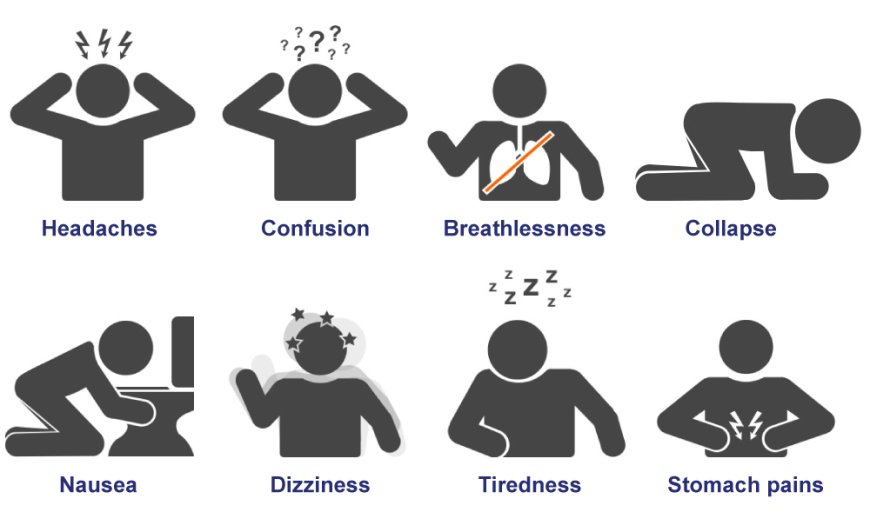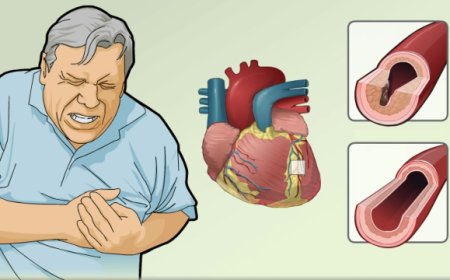Carbon monoxide poisoning

Introduction :
In this article, we'll embark on a journey to understand Carbon Monoxide Poisoning, a serious issue that can affect people in India. We'll explore what Carbon Monoxide Poisoning is, its signs and symptoms, causes, risk factors, types, diagnostic tests, treatments, complications, and prevention techniques, all explained in simple language for our 10-year-old readers.
Signs and Symptoms:
Carbon Monoxide Poisoning can be like a silent intruder, causing discomfort and affecting a person's breathing and overall well-being. Some common signs and symptoms of Carbon Monoxide Poisoning include:
- Headache, like having a mild pain in the head that won't go away easily.
- Feeling dizzy or lightheaded, like the world is spinning around.
- Difficulty in breathing, like struggling to take deep breaths.
What is Carbon Monoxide Poisoning? :
Carbon Monoxide Poisoning occurs when a harmful gas called "Carbon Monoxide" builds up in the body, making it hard to breathe properly. It's like having a sneaky visitor that steals the oxygen we need.
How Is Carbon Monoxide Poisoning Classified? :
Carbon Monoxide Poisoning is not classified into different types, but it can vary in severity depending on how much gas a person breathes in and for how long.
Causes and Triggers:
The main cause of Carbon Monoxide Poisoning is breathing in too much Carbon Monoxide gas. This gas can come from burning fuels like wood, coal, or gas in homes or closed spaces.
Risk Factors with Examples:
Certain factors can increase the chances of a person getting Carbon Monoxide Poisoning. For example:
- Using stoves or heaters inside a closed room without proper ventilation can be risky.
- People who stay in homes with poor ventilation may have a higher risk of breathing in the harmful gas.
Types of Carbon Monoxide Poisoning:
Carbon Monoxide Poisoning doesn't have different types, but it can vary in severity. Some people may have mild symptoms, while others may experience more severe effects.
Diagnostic Tests and Their Use:
To diagnose Carbon Monoxide Poisoning, doctors may use special tests to check the amount of Carbon Monoxide in the blood. Some common tests include:
- Blood Gas Analysis: This involves taking a small sample of blood to check for Carbon Monoxide levels.
- Pulse Oximetry: This is like a magic sticker that goes on the finger to check how well the body is getting oxygen.
Treatments:
Treating Carbon Monoxide Poisoning aims to remove the harmful gas from the body and support breathing. Some common treatments are:
- Fresh Air: The first step is to get away from the source of Carbon Monoxide and breathe fresh air.
- Oxygen Therapy: Doctors may give oxygen through a special mask to help the body get enough oxygen.
Complications of Carbon Monoxide Poisoning:
If Carbon Monoxide Poisoning is not treated promptly, it can lead to serious breathing problems and affect the brain and heart.
Prevention Techniques:
Preventing Carbon Monoxide Poisoning is essential, and some techniques can help keep our homes safe. For example:
- Ensuring proper ventilation in homes and not using stoves or heaters inside closed spaces.
- Installing Carbon Monoxide detectors, like a superhero alarm, to warn us if there's any harmful gas.
Remember, just like how we take safety measures and precautions in our daily lives, learning about Carbon Monoxide Poisoning and taking care of our homes can help keep us safe. If anyone experiences symptoms like headache or dizziness, it's essential to tell a grown-up and seek medical help. With proper care, understanding, and fresh air, we can embrace every joyful moment in India's beautiful world, breathing freely and cherishing each breath!
What's Your Reaction?
 Like
0
Like
0
 Dislike
0
Dislike
0
 Love
0
Love
0
 Funny
0
Funny
0
 Angry
0
Angry
0
 Sad
0
Sad
0
 Wow
0
Wow
0








































































